Argentina is the fourth most visited country in the Americas. In 2010 it was visited by 5.3 million tourists. Such popularity is justified by a comfortable climate and a wide variety of interesting places.
A lot of tourists come to Buenos Aires. The city is European, but with its own, South American charm. There are many museums, beautiful streets, well-developed infrastructure. Different areas of the city have a very diverse atmosphere. The nature of Argentina has incredible beauty. All areas of Patagonia are very popular.
What to see in Argentina?
The most interesting and beautiful places, photos and a brief description.
- City of Buenos Aires
- Iguazu Falls
- Peninsula Valdes
- May Pyramid in Buenos Aires
- Perito Moreno Glacier
- Cueva de las Manos Cave
- Colon Theater
- Talampaya Natural Park
- Ischigualasto - Argentine Moon Valley
- Los Glaciares National Park
- Nahuel Huapi National Park
- Patagonia
- La Boca area
- Andes
- Inca bridge
- Casa Rosada
- City of San Carlos de Bariloche
- Recoleta Cemetery
- Salinas Grandes Salt Flats
- Tierra del Fuego (national park)
- Obelisk in Buenos Aires
- Fitzroy
- Bridge Women
- Mendoza
- Argentine tango
City of Buenos Aires
The Argentinean capital is the most Europeanized city in South America. It was founded in 1536, later it was destroyed. New construction was completed in 1580. The city is located on the west bank of the Rio de la Plata. It is known for its historic districts with lively commerce, antique shops, cafes and restaurants. This is a modern metropolis, where there is a lot of entertainment.
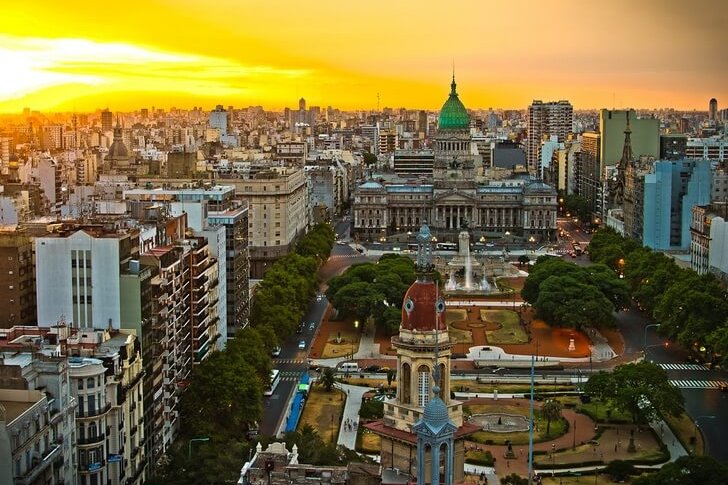
Address: Buenos Aires, Argentina
Phone: +54 011 5280-2000
Opening hours: 24/7
Iguazu Falls
The complex consists of 275 waterfalls on the Iguazu River. They belong to the Argentine and Brazilian national parks. The width of the complex is 2.7 km. The maximum height is 82 meters. The largest is the waterfall "Devil's Throat". The width of its cliff is 150 meters, and the length is 700. Together, the waterfalls form a depression with a total area of 2.7 square meters. km. Iguazu have been named one of the seven natural wonders of the world.

Address: Iguazu, Argentina
Phone: +54 3757 49-1472
Opening hours: 08:00 - 18:00
Peninsula Valdes
This peninsula on the Atlantic coast of Argentina is called a continuous open-air zoo. Valdes is known for its fauna. Ostriches Nandu, guanaco, maras live on it. The coastal waters are inhabited by eared seals, southern elephant seals, southern right whales, and sea lions. Thousands of Magellanic penguins live on a special farm. On the territory of the island there are salt lakes, reefs and rocks.
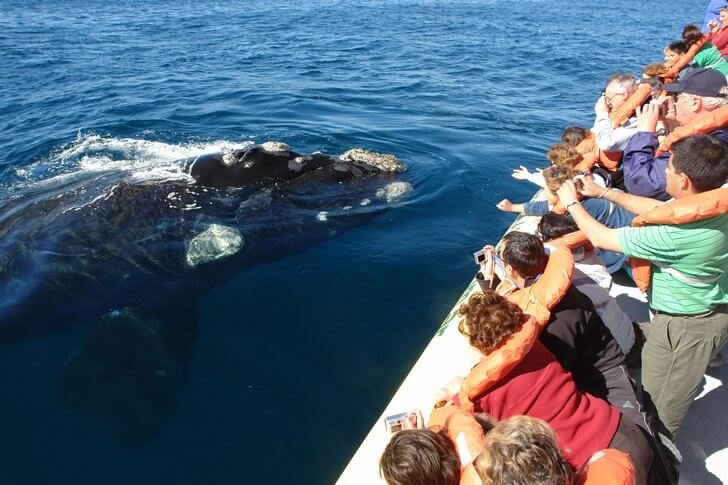
Address: Valdes Peninsula, Argentina
Opening hours: 24/7
May Pyramid in Buenos Aires
The May Pyramid is located in the central square of Buenos Aires. This is the country's first patriotic monument. It was opened on May 25, 1811 in honor of the first anniversary of the May Revolution. At the top of the pyramid there is a statue - an allegory of Freedom in a Phrygian cap. Its height is 3.6 meters. The height of the entire monument is 18 meters. In the last century, the plaster covering it was noticed on marble.

Address: Plaza de Mayo, Buenos Aires, Argentina
Opening hours: 24/7
Perito Moreno Glacier
It is located in the Andes, on the border of Argentina and Chile. It is one of the three non-retreating glaciers of Patagonia. Its area is 250 sq. km, width 5 km, and average height 170 meters. Perito Moreno is the third largest fresh water reserve in the world. Periodically, he advances on Lake Argentino. Raised water breaks the ice dam and pours out. This spectacle especially attracts tourists. The glacier itself is very convenient for observation.
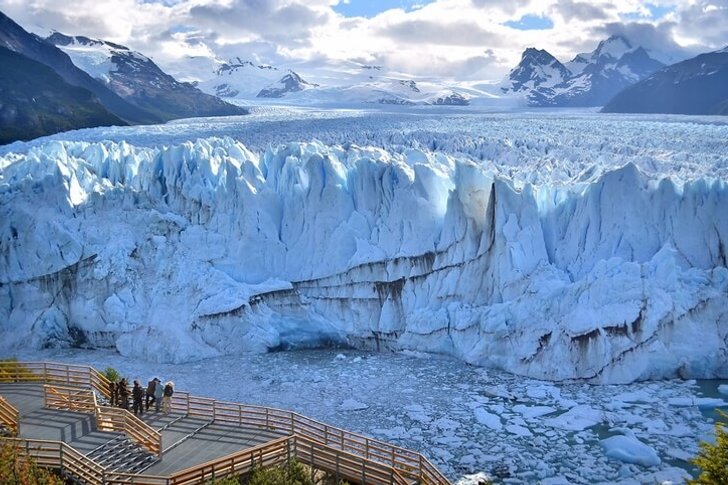
Address: Los Glaciares National Park, Argentina
Phone: +54 2902 49-6000
Opening hours: 08:00 - 18:00
Cueva de las Manos Cave
This is a cave in the province of Santa Cruz, in the valley of the river Pinturas. It once served as a home for people who were the forerunners of the hunters of Patagonia. The cave is known for its handprints painted on the walls. Mostly this is the left palm of teenage boys. Probably, leaving an imprint was part of some kind of ritual. The age of the oldest is 9 thousand years BC.
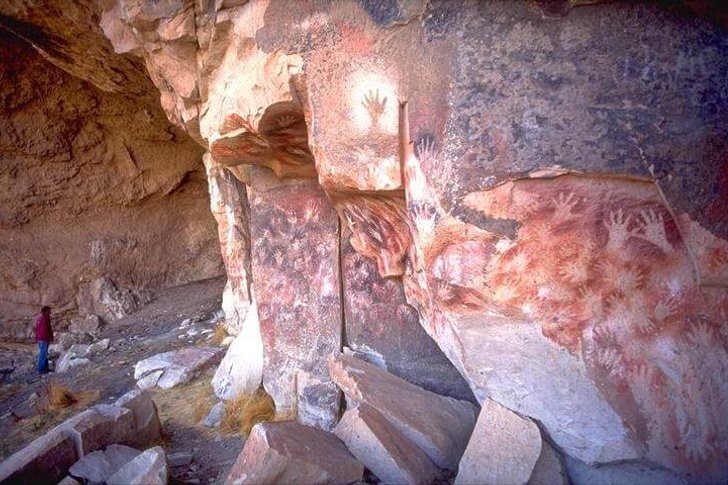
Address: Los Halles National Park, Argentina
Phone: +54 2976 41-2314
Opening hours: 09:00 - 17:00
Colon Theater
The building we see now was founded in 1889. Construction ended only in 1908 due to the deaths of the architects and the sponsor. The theater could accommodate 2,500 spectators, and up to 1,000 people could listen to concerts while standing. Busts of prominent composers are installed in the foyer of the theater, and the interior is richly decorated. Tourists can take a tour of the theater, but it can cost more than a ticket to a performance.

Address: Cerrito 628, Buenos Aires, Argentina
Phone: +54 11 4378-7109
Opening hours: 10:00 - 17:00
Talampaya Natural Park
This is a small but very interesting park in the province of La Rioja. Its area is 2 sq. km. On the territory of the park there is a canyon with red rocks, on which there are drawings and pictograms. Trees grow from cracks in the rocks, shrubs, flowers and cacti grow in oases and lawns. The favorite entertainment of tourists in the canyon is to find a place where the echo can be heard for several minutes and shout different phrases.
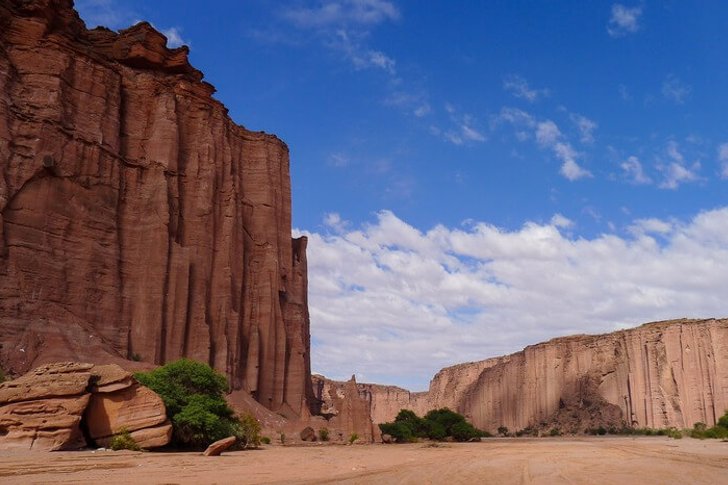
Address: Talampaya, Argentina
Phone: +54 3865 43-1107
Opening hours: 08:00 - 17:00
Ischigualasto - Argentine Moon Valley
This valley in the province of La Riogia, which resembles the surface of the moon. Among her landscapes are many treasures for scholars. The remains of 54 species of dinosaurs, various reptiles, animals and plants were found on the territory of the national park. There is a museum in Moon Valley where you can see these exhibits. The park contains rocks, solitary plants and round stones, the origin of which remains a mystery.
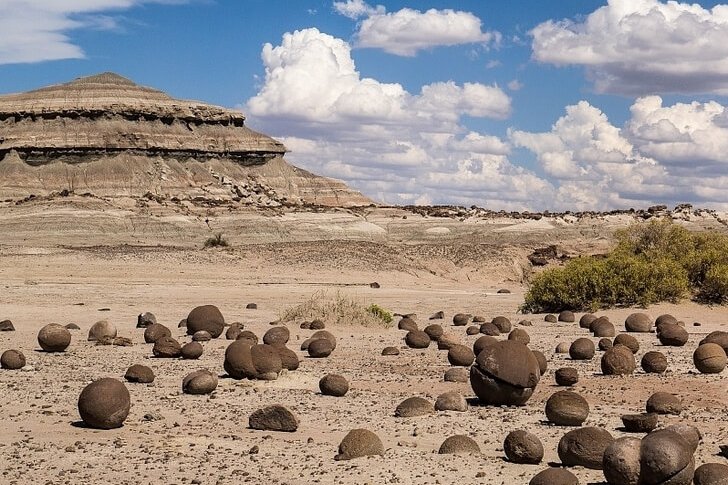
Address: Ischigualasto, Argentina
Phone: +54 3868 42-1392
Opening hours: 08:00 - 18:00
Los Glaciares National Park
The park is located in the province of Santa Cruz. Its area is 4459 sq. km. 30% of the park is covered with ice. There are 47 glaciers on its territory. Each part of the park has its own lake. It includes the largest lake in Argentina - Argentino, as well as the Perito Moreno glacier. Los Glaciares is home to over a hundred species of birds, llamas, Andean deer, cougars, gray foxes.
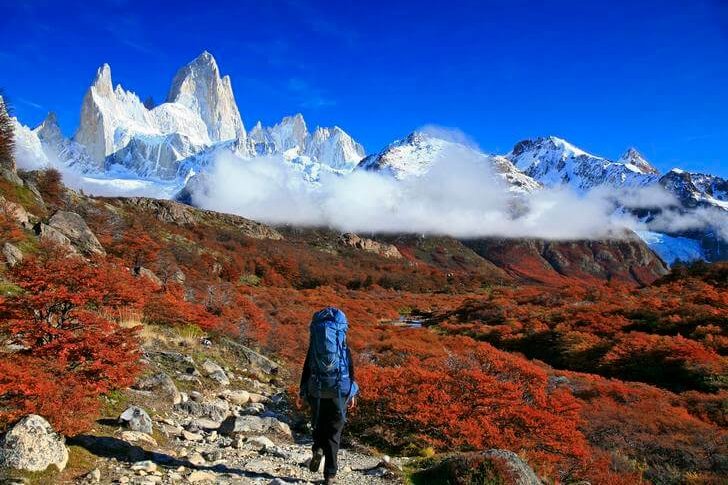
Address: Los Glaciares National Park, Argentina
Phone: +54 2902 49-6000
Opening hours: 08:00 - 18:00
Nahuel Huapi National Park
The oldest national park in Argentina was founded in 1934 in the area of Lake Nahuel Huapi. The park has a variety of nature. There are rare plants on its territory. From any point in the park you can see the Tronador volcano. Glaciers sliding down its slopes give rise to mountain lakes. The most famous of them is Frias. The main decoration of the park is Lake Nahuel Huapi. It is said that the Nahuelito monster lives in the lake.
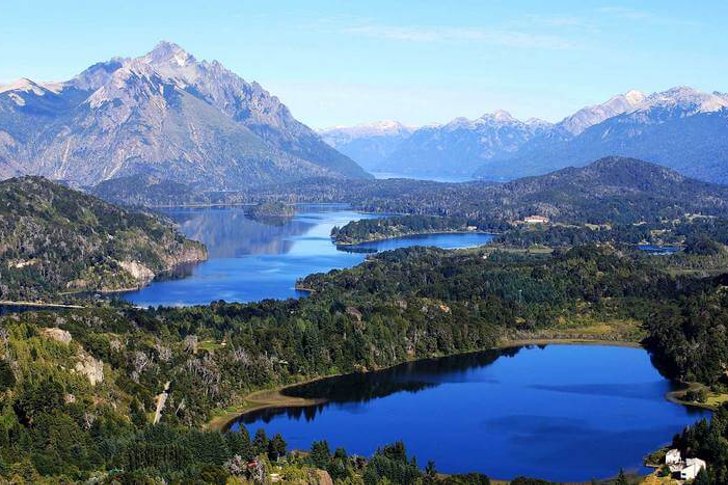
Address: Nahuel Huapi, Argentina
Phone: +54 294 442-2433
Opening hours: 08:00 - 18:00
Patagonia
Patagonia is an amazing, unique world. It covers plains, fjords, mountain peaks and glaciers. The views of Patagonia are breathtaking. Next to the huge glaciers, it seems that the whole world has stepped aside and is completely unimportant. The territory of Patagonia belongs to Chile and Argentina. Its economy is driven by tourism and the wool trade.

Address: Patagonia, Argentina
Opening hours: 24/7
La Boca area
This is an area in Buenos Aires. It started the development of the city. Once on its territory there was a port through which all goods were delivered to Argentina. Also, La Boca served as a place where they built barracks for black slaves. Today the area is known for artists, football team, carnivals and masquerades. It is also considered the birthplace of tango.
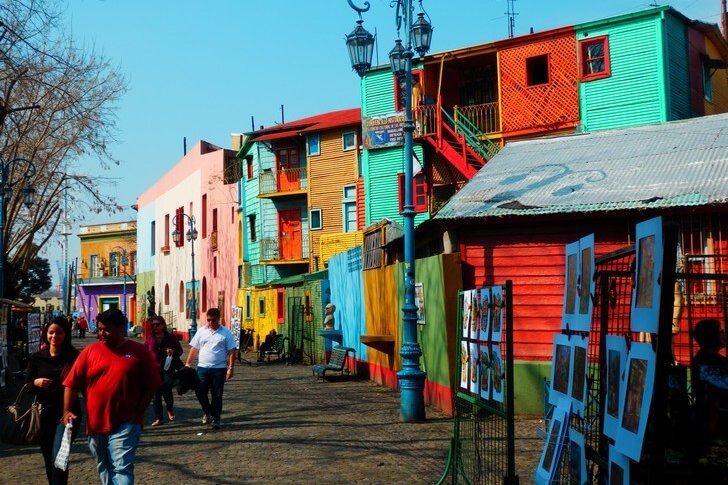
Address: La Boca, Buenos Aires, Argentina
Opening hours: 24/7
Andes
This is the longest mountain system in the world. It stretches almost through all of South America for 9,000 km. In some places, the width of the mountains reaches 500 km. The Andes are located in several climatic zones, so their flora and fauna are very diverse. Llamas, spectacled bears, pudu deer and other animals live on their territory. The slopes of the mountains are covered with picturesque coniferous and pine forests.
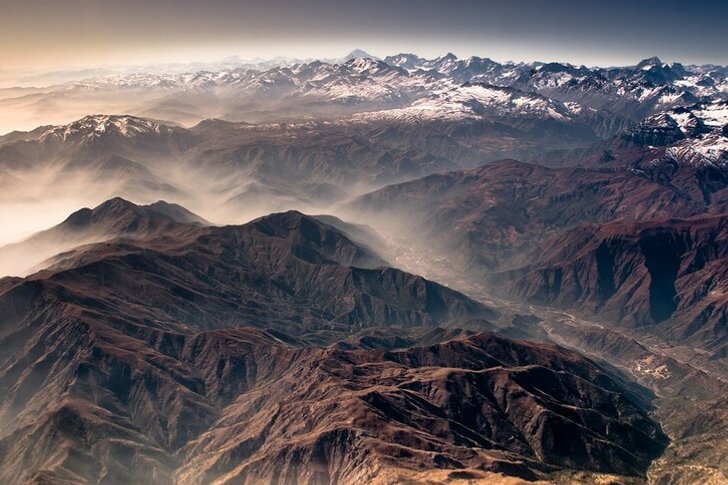
Address: Andes, Argentina
Opening hours: 24/7
Inca bridge
This is a bridge over the Mendoza River, created by nature from avalanches and rockfalls. It is 28 m wide, 48 m long and 8 m thick. It is located 27 m above the water. There is a village next to the bridge. It has a mountaineering museum as well as five geothermal springs. They are considered healing, there was even a resort near them. It was destroyed by an avalanche and now there is only one building left.

Address: Puente del Inca, Argentina
Opening hours: 24/7
Casa Rosada
This is the name of the residence of the President of Argentina. It is located on Plaza de Mayo in the very center of the capital. This is the place where the president works but doesn't live. Construction of the palace began at the end of the 16th century. In subsequent years, it was completed and modified more than once. Tourists can attend excursions to the museums of the residence - Rivalaviya's office, where the president works, the Hall of Busts.
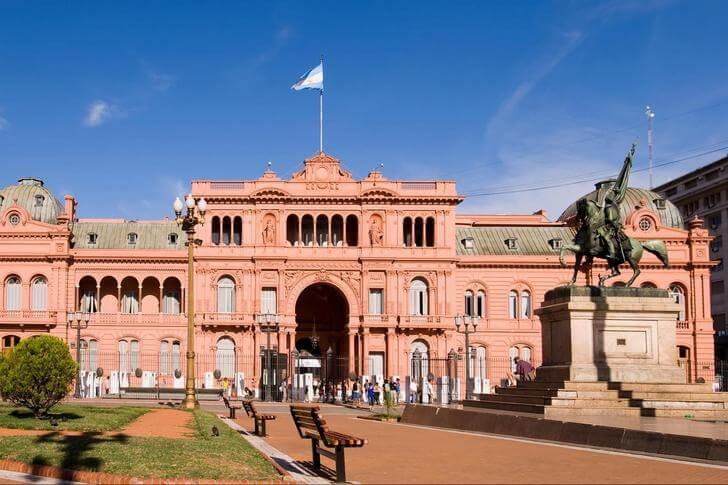
Address: Calle Balcarce 50, Buenos Aires, Argentina
Phone: +54 11 4344-3000
Opening hours: 09:00 - 17:00
City of San Carlos de Bariloche
The city is located in the province of Rio Negro, at the very foot of the Andes. It is surrounded by beautiful lakes and mountains. Tourists who like outdoor activities come here. The city is famous for its ski resorts, water sports, mountaineering. There are also many places with excellent views of the surroundings.
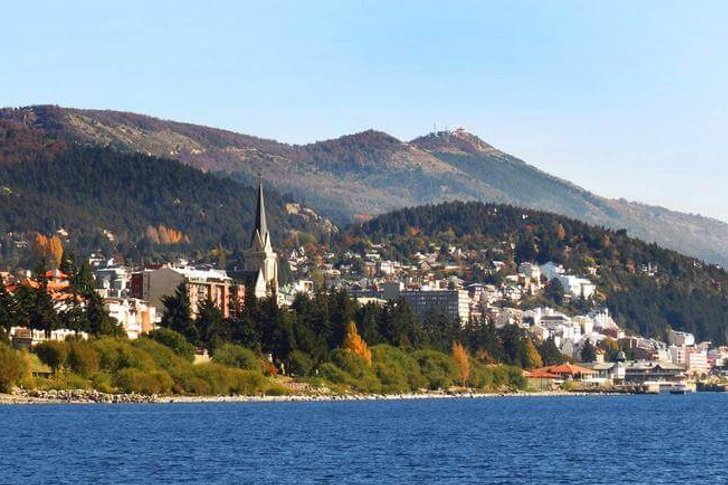
Address: San Carlos de Bariloche, Argentina
Opening hours: 24/7
Recoleta Cemetery
This cemetery was built in 1732. During its existence, many famous Argentines were buried here. The most impressive thing in the cemetery is his tombstones. The abundance of crypts and monuments makes a huge impression. The funeral traditions of the Argentines are very interesting and gloomy. Entrance to the cemetery is free.
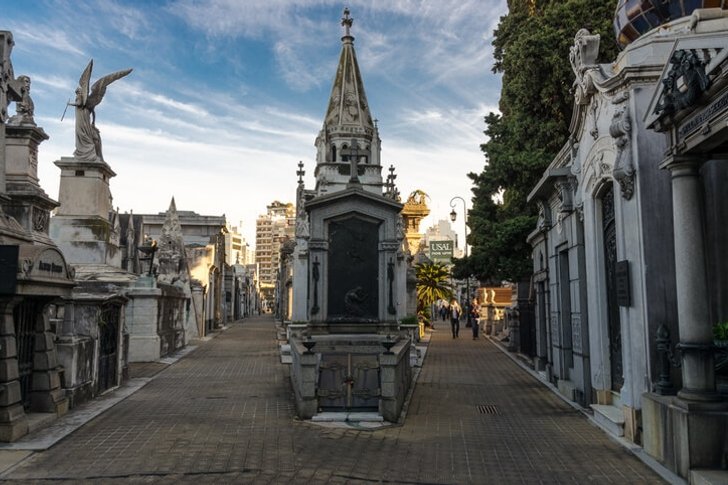
Address: Cemetery of Recoleta, Junín 1760, Buenos Aires, Argentina
Phone: +54 11 4801-1450
Opening hours: 07:00 - 17:00
Salinas Grandes Salt Flats
Salinas Grandes is located in the northwest of Argentina. It is located in a tectonic depression between mountain ranges. Its area is 6 thousand square meters. km. This is the bottom of a dry lake. A railway and a highway are laid through its snow-white expanses. The temperature there is high and the climate is very dry. Mineral salts and soda are mined here. The salt marsh is the third largest in the world.
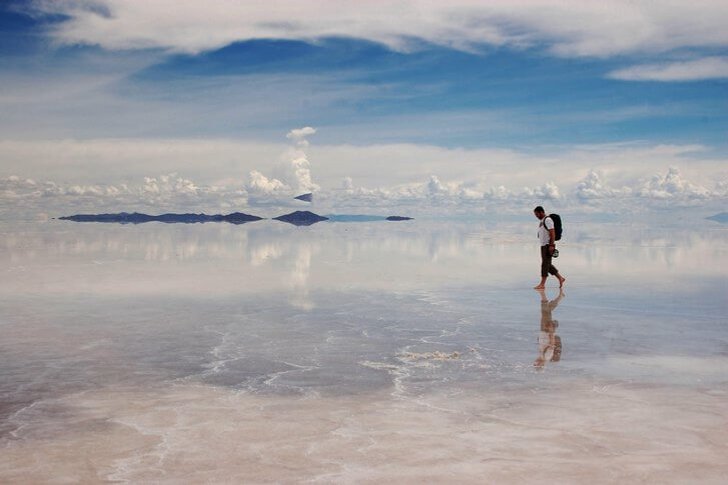
Address: Salinas Grandes, Argentina
Opening hours: 24/7
Tierra del Fuego (national park)
The park is located in the south of the island of Tierra del Fuego. Its area is 630 sq. km. It is the southernmost national park in the world. On its territory ends the Pan-American Highway and the railway. The landscapes of the park consist of lakes, islands, rivers and lagoons, and dense forests alternate with shrubs. The harsh climate of this place is endured by red foxes, guanacos, emerald parrots, and condors.
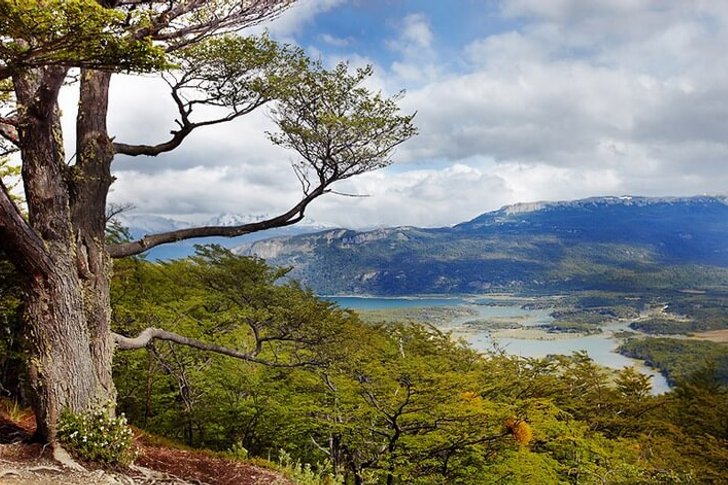
Address: Tierra del Fuego National Park, Argentina
Phone: +54 2901 42-0714
Opening hours: 08:00 - 17:00
Obelisk in Buenos Aires
This is a modern monument in the center of the capital on Republic Square. Its height is 67 meters. They erected an obelisk in the very place where the flag of Argentina was once hung for the first time. It was built in 1936 in just 4 weeks. The monument has become a venue for events and a city landmark for meetings and thematic gatherings.
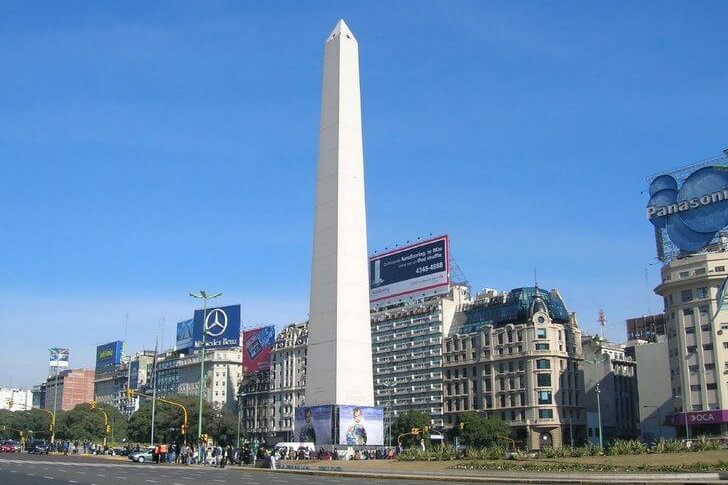
Address: 9 de Julio Avenue, Buenos Aires, Argentina
Phone: +54 11 5275-1135
Opening hours: 24/7
Fitzroy
Mount Fitzroy is a mountain in Patagonia. Its height is 3375 meters. It is considered one of the most difficult climbs in the world. It attracts many climbers. The first ascent was made in 1952. The slopes of the mountain are almost vertical, but very beautiful. Excursions to the mountain are popular among tourists, but it is important to wait for good weather. The best time to visit Fitzroy is from December to February.
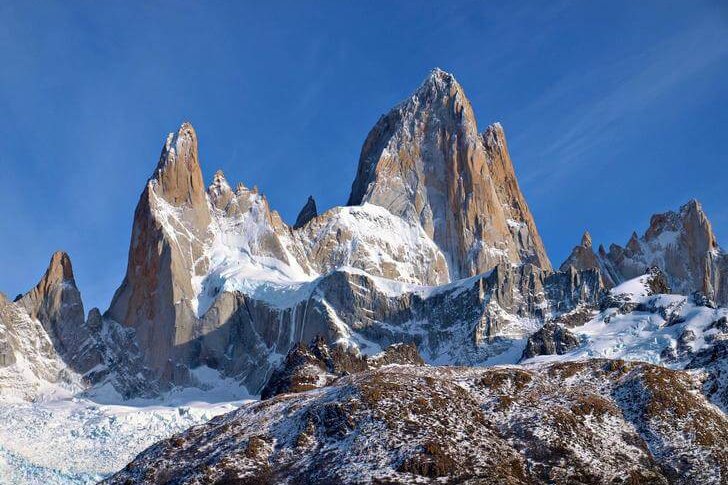
Address: Cerro Fitz Roy, Argentina
Opening hours: 24/7
Bridge Women
This is a swing bridge in Buenos Aires, the work of the architect Santiago Calatrava. Its opening took place in 2001. The design of the bridge is reminiscent of a couple dancing the tango. It got its name because of the large number of streets in the nearest area named after women. The bridge itself is pedestrian, its length is 170 meters. It is divided into three sections, one of which can clear the way for ships.

Address: Puente de la Mujer, Buenos Aires, Argentina
Opening hours: 24/7
Mendoza
The province is located in the west in the Cuyo region. Thanks to the sunny, dry climate, Mendoza has become a major wine-growing area. Its 140 thousand hectares of vineyards are divided into five parts. The most interesting places in Mendoza are the ruins of the church of St. Francis, the park of St. Martin and museums. The city also holds a harvest festival every year, which lasts three months.
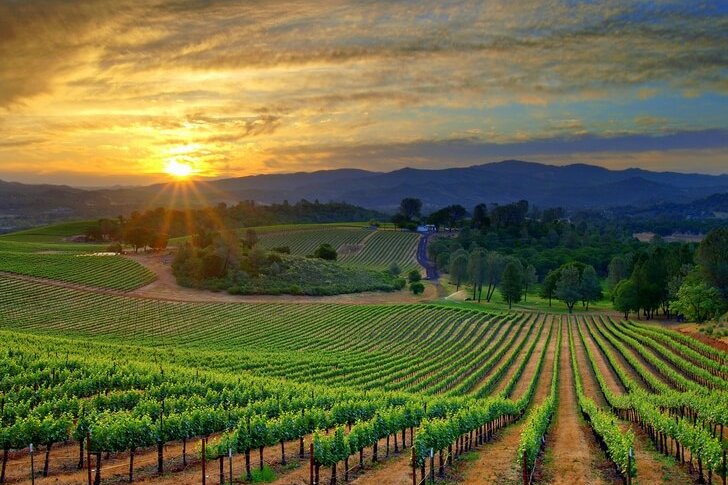
Address: Mendoza, Argentina
Opening hours: 24/7
Argentine tango
This is a pair dance, which was originally performed by men. Its creators were the lower classes of the population of Buenos Aires. The rise of the dance takes place in the 1930s-1950s. The meaning of the dance lies in the "communication" of partners, their passion and merging into one. Argentine tango has four components: step, turn, stop and embellishment. There are many styles of this dance.

Address: Buenos Aires, Argentina
Opening hours: 24/7
